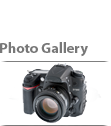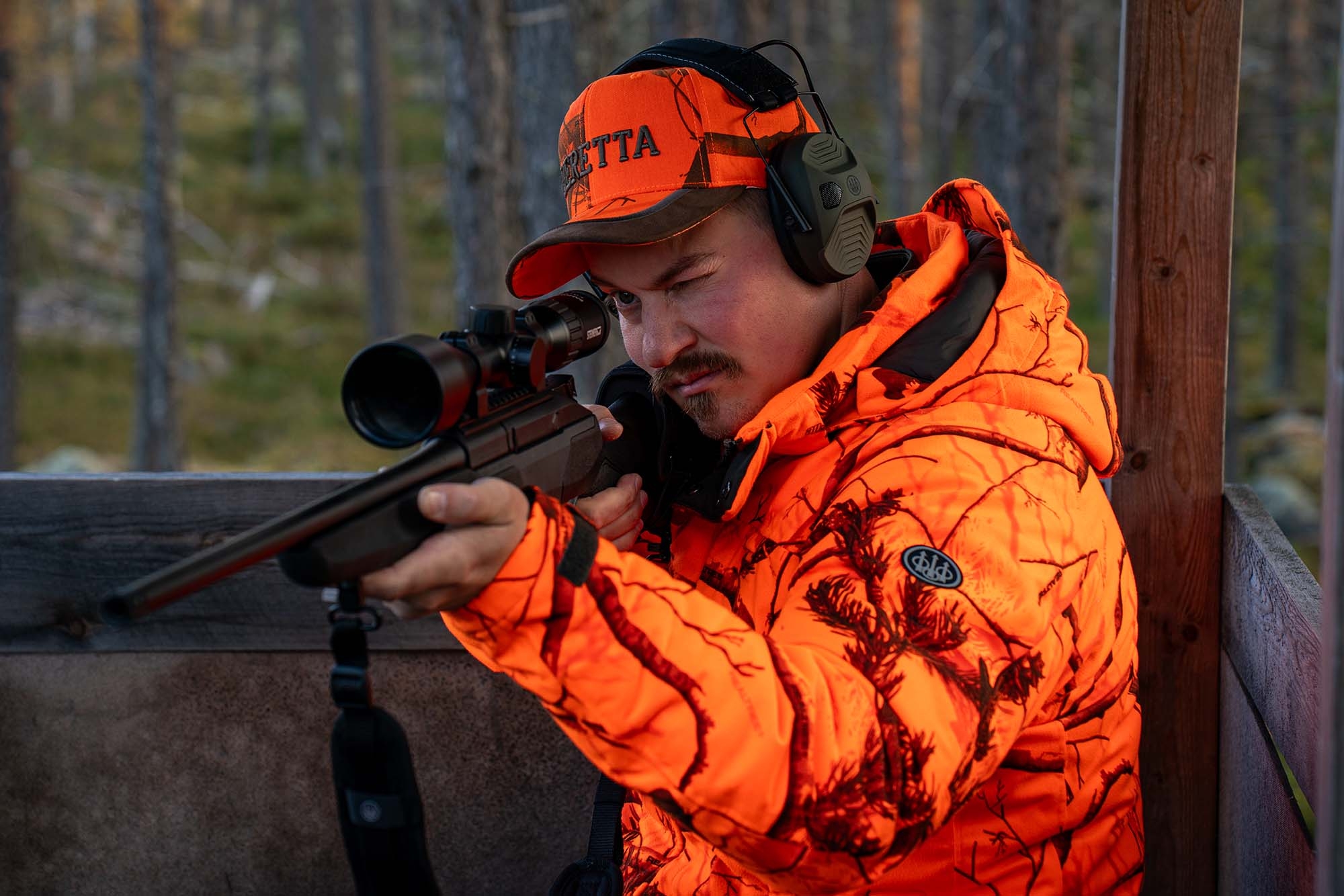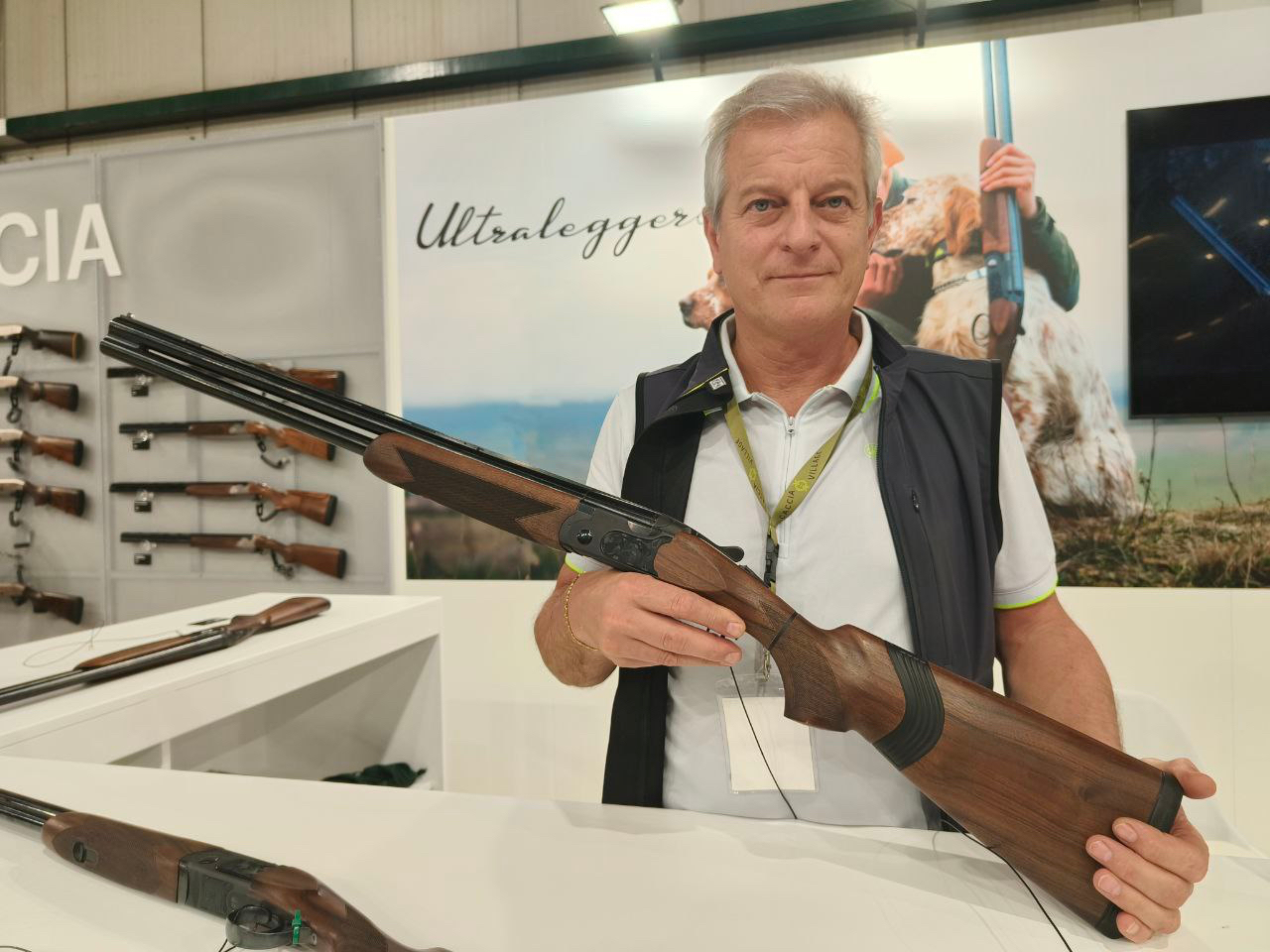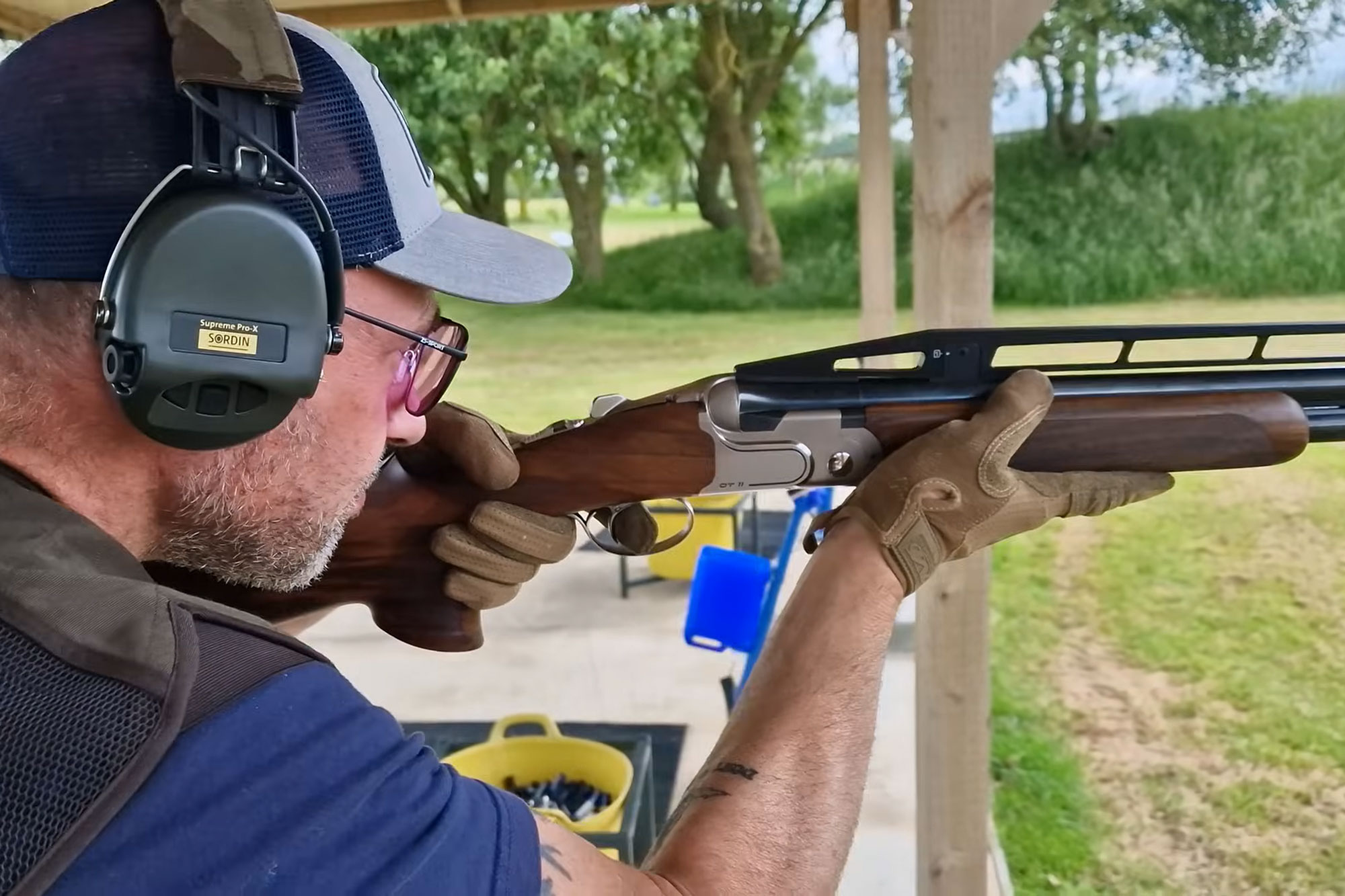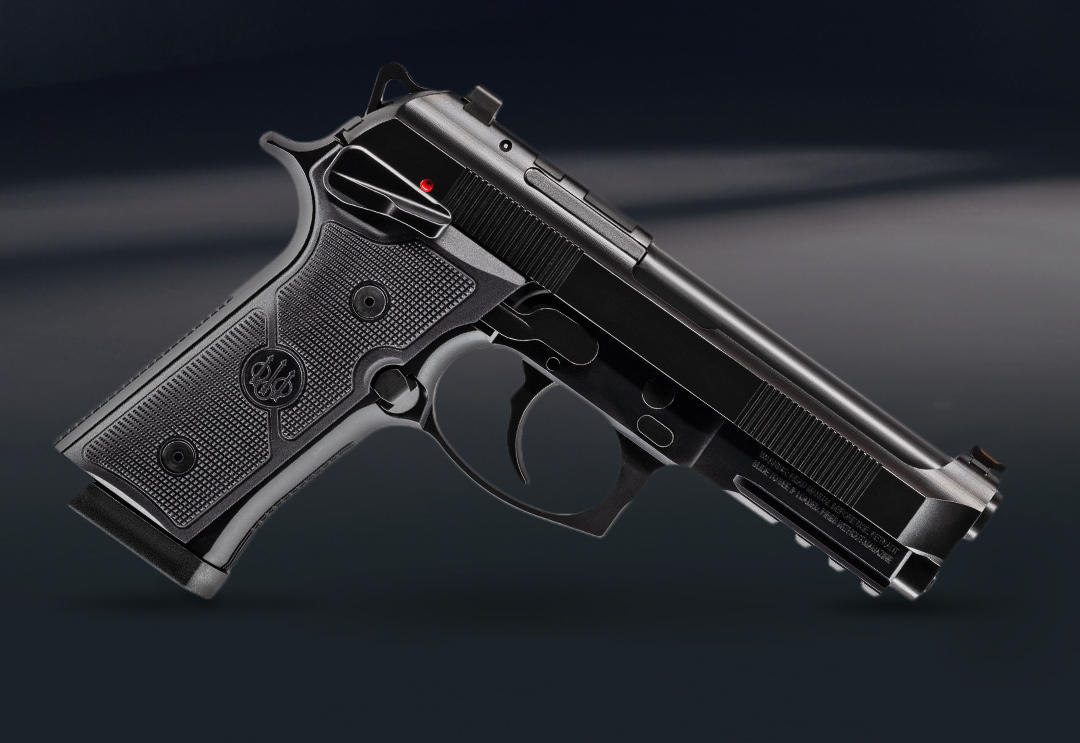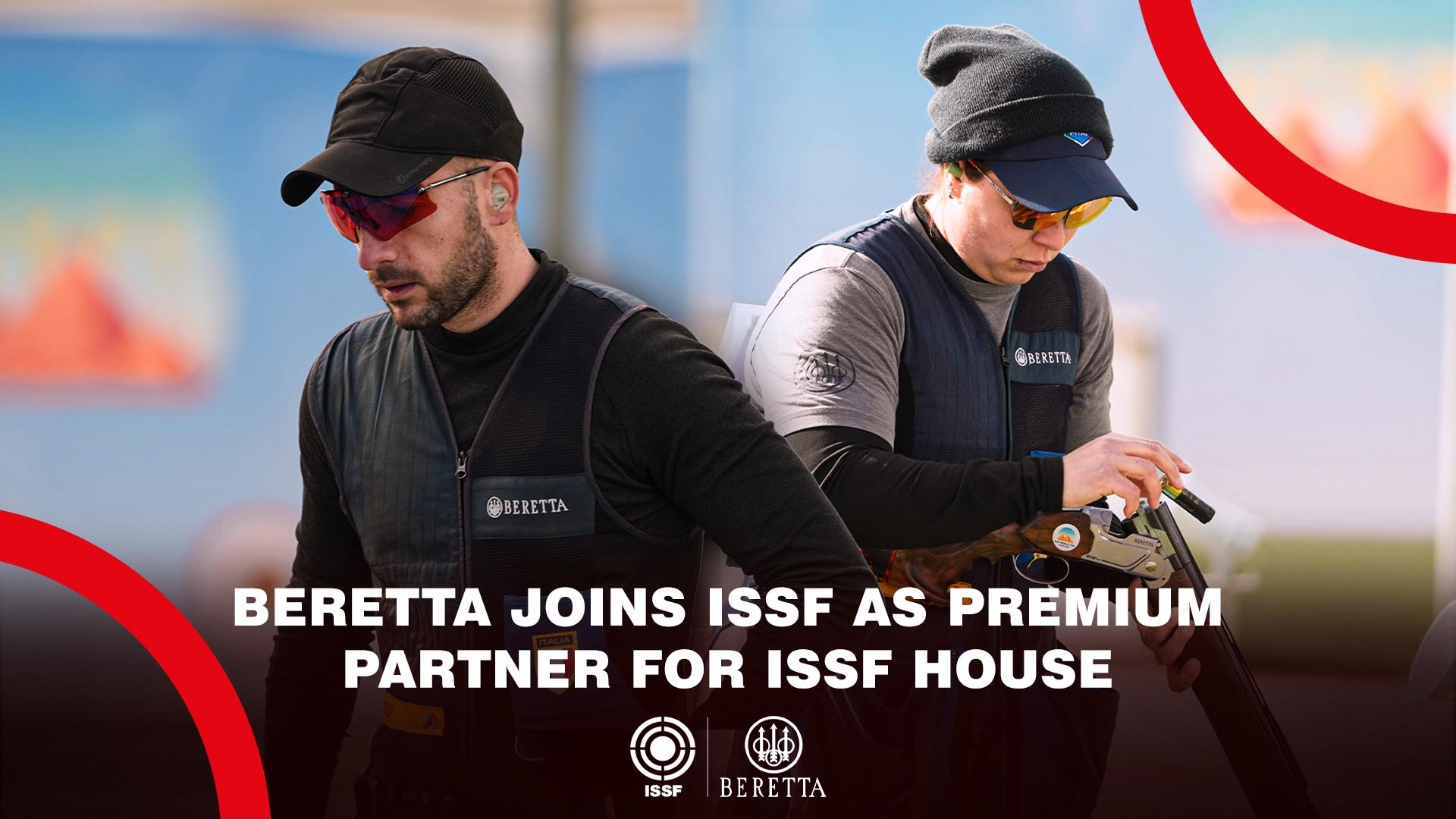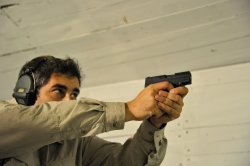
Being aware of the market's needs and tendencies, Beretta created a new pistol which blends optimal portability and packs a powerful punch for personal defense.
Even though the Nano is a backup pistol, the design stereotypes usually linked to this type of weapons have all been abandoned. Chamberings with low kinetic energy and blow back locking systems, always present in the sub-compact guns, have been replaced by fully locked, short recoil systems and chamberings in 9X19 caliber or .40 S&W.
The Beretta BU-9 “Nano”, as anticipated by its name, is an extremely compact semiautomatic handgun. The length is 143 mm while the maximum width, measured at the grip, is 23mm. The height is 106mm and the total weight of the unloaded gun is 562g.
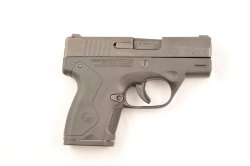
The Beretta Nano’s frame is made of fiberglass reinforced polymer, reducing its weight as well as the handgun's size, making the grip-panels unnecessary. The pistol grip offers a discrete control, thanks to the polymer texturing of the front and the back of the grip.
The slide is made of carbon steel hardened through a Nitruration finish process (called Pronox), improving greatly the gunʼs superficial hardness and resistance to wear. All metal surfaces have a matte black finish. The cocking serrations allows to pull back the slide easily and without effort.
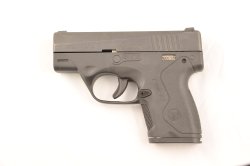
The Nano is completely snag and tangle free, reducing the possibility of interference with the user’s clothing during the extraction from the holster. The fact that the external slide stop has been removed from the design, and that a disassembling pin-latch-shaped screw head is not protruding out from the frame, means that you wonʼt be having any problems when it comes to taking the gun out of its holster. Even the magazine release button is molded so that it follows the curvature of the frame. A squared trigger guard has been replaced by a round one.
Actually, Beretta adopted the ever-valid concept that a pistol should have the round shapes of a soap bar.
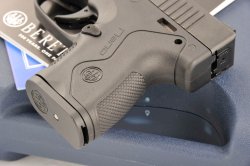
The pistol has no manual safeties. Weʼve always been of the opinion that mechanical simplifications which eliminates potentially breakable parts is a great idea, also because studies on battle stress effects on operators and soldiers have proven that a complex weapon that requires a mental process, even a simple one, should absolutely be avoided. With the adrenalin in the blood, fatal errors can be committed, to the point of not even managing to shoot; such is the case of a safety that needs to be taken off, or actually engaged unknowingly. The only actions that are easily understood and repeated in every possible situation are the simple ones: taking the gun out and pulling the trigger.
In the Nano, safeties are still present ‒ they are automatic and they consist of a firing pin safety and the one in the middle of the trigger, which prevents trigger travel in case the gun falls. The Nano can be carried cocked and loaded with the same safety offered by a revolver.
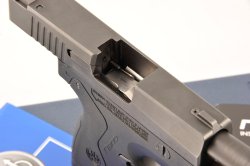
There is an indentation on the side of the gun, right in front of the trigger guard. It is meant to offer a place to keep the index finger while gripping the gun in the ready position; you should keep it slightly bended, with the fingertips touching the frame. The ergonomic indentation will help maintain this grip, which is less tiring than the one in which you have to keep your finger stretched out over the frame. The internal bolt catch, as well as the reversible button magazine release control, make the gun particularly convenient for the left-handed.
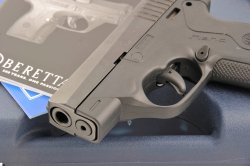
Taking into consideration many uses of the Nano, we find the elimination of the external lever of the slide stop, which is still internally present, very useful. The Nano will be used in situations in which immediate reaction to an aggression calls for rapidly shooting two or three rounds in a life or death scenario. Rarely an empty magazine should be replaced, and even then, we donʼt think it makes a difference the fact that you would be able to use a manual slide stop release. Loading and unloading of the gun should be done more carefully but in theory these actions are done during less stressful moments.
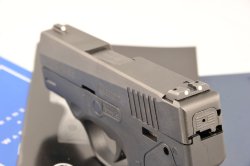
The Nano uses a double action only, floating firing pin striker percussion system for igniting the cartridge’s primer. This mechanical solution is certainly nothing new, leaving aside possible imitation accusations: it should be remember that in the gun industry, everything was invented years before polymers. For those who still believe to be in presence of a recent discovery, we’d like to recall that a similar striking system, which was created as a part of a project lead by renowned weapons technician Karel Krnka, dates back to 1895. A similar striker system was first used in the model 1907Roth-Steyr pistol. Furthermore, Heckler&Kock introduced the VP70Z pistol in 1970 and this was the first gun ever with a polymeric frame. So let's just stop filing suits for plagiarism and leave these rants to songwriters.
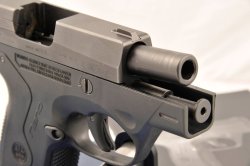
Even the breech locking system, employed in the Nano, is one of the most frequently used one: barrel short recoil operated, modified Browning breech locking system, in which the lock between the barrel breech and the slide is achieved by the prismatic portion of the barrel around the chamber connecting to the ejection window. Of course, Beretta used the breech action locking system which has proven to be the most reliable in its simplicity and composition.
The shooting cycle of the Nano pistol starts by loading the magazine and inserting it in the gun. Pulling back on the slide and allowing it to return fully forward chambers a round, stripping it off the top of the magazine.
Pulling on the trigger draws back the firing pin, compressing its spring. Once the trigger reaches the end of its travel, the firing pin is released and is driven forward by the spring’s thrust, with enough force to ignite the round’s primer.
The propellant burns, pushing the bullet down the barrel’s bore; both barrel and slide, fully locked, recoil for a few millimeters. During this backwards travel, the unlocking ramp machined on the barrel engages an element located in the frame, forcing the barrel to tilt downwards, breaking the lock with the slide, and then stop; once the slide has been freed, it continues its rearward travel. When all kinetic energy is expended, the recoil spring compressed by the slide’s travel pushes it back forward. At this point, the slide strips another round, pushing it into the chamber and completing the cycle, leaving the pistol ready to fire the next shot. Once all rounds in the magazine are shot, the internal slide stop pushed by magazine follower blocks the slide fully backwards.
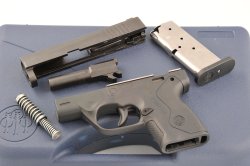
While most other handguns in this class use the mixed trigger action – double action for the first shot and single action for the following ones, with which the shooter experiences the so-called “crunch tick” – the loss of the rhythm between the shot in the double action and the following shot in single action – which may cause a miss or slow recovery of the sight picture of the target, the Nano DAO trigger, as modern operating rules suggest, is always the same – from the first to the last shot.
Disassembling of the gun is very easy and there is no dry fire operation that needs to be carried out. There are some tools needed but fortunately they are not very specific. Once the magazine has been removed from the pistol and the chamber checked and cleared, to separate the slide from the frame, the firing pin must be de-activated.
This is accomplished by pressing a pin which is recessed in a small hole located on the rear right side of the frame, near the beavertail, using a small pointy object, such as a ball pen or hard pencil.
Then, using a coin or other similar object, a one half turn of the slotted screw head shaped disassembly bolt (also located on the frame’s right side, right above the trigger guard) must be carried out.
The spring rod with double captivated recoil springs and the barrel can then be removed from the slide. The stainless steel trigger subframe, on which the gun's serial number is actually printed, housed inside the polymer frame can be easily extracted as well, making eventual repairs to all moving parts of the lower part of the pistol very easy.
The outer edges of the stainless steel frame, bent 90° outwards, also double as slide guides.
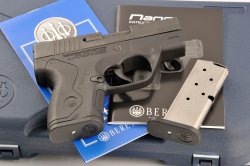
The disassembly of a handgun is not a tactical task and usually itʼs done at home, calmly, where there are many tools available. Therefore, the Beretta Nano maintenance procedure is not a cause for a worry. It is a positive feature that the gunʼs mechanics doesnʼt involve dry firing during disassembly, a procedure which may cause accidents, that mostly occur at home. Some manufacturers that use the internal floating firing pin striker have embraced this additional safety and we hope many more will follow.
Regardless of the fact that the available rounds contained in the metal single stack magazine are just 6, other than the one inside the chamber, the calibers in which the Nano is chambered – 9mm and 40S&W ‒ make this little handgun something more than a simple back up. Just think about how many people used the bulky 1911 with a seven-round magazine.
The integral, low profile 3-dot sights are well proportioned and are fastened with set screws and can be easily replaced or adjusted for windage.
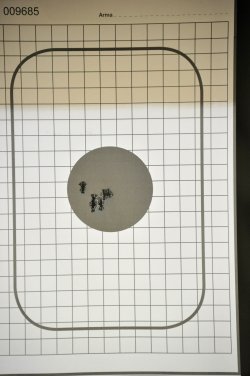
The trigger of the sample we tested exhibited a fluidity similar to the one you can experience with a good revolver. Trigger travel is quite long and break is very clean; trigger pull peaks at about 3,6 Kg.
We have recorded no malfunctions under the test, carried out with a 9 mm Nano; the recoil is surprisingly mild, considering the weight and size of the gun; on the other hand, muzzle climb is quite dramatic but controllable. Accuracy is excellent, as the tester managed to keep all seven rounds (a full magazine plus one round in the chamber), shot at a distance of 12 meters, in a 5 cm group. We used Geco 124 grain full metal jacket loads.
While the test has been done holding the gun with both hands, we’d generally recommend shooting with one hand only when using this kind of gun.
In a real life shooting scenario, after the extraction, it could be very easy to put the support hand it in front of the barrel with a gun this small, facing some very unpleasing consequences.
The little Beretta BU-9 Nano, created by the American Beretta branch in Accokeek, Maryland, enters a very competitive market segment. Naturally, Beretta confides in its brand quality as a selling point, and also on the undisputed excellent reliability of its products, to rouse interest in potential customers and stand out from a plethora of competitors.




